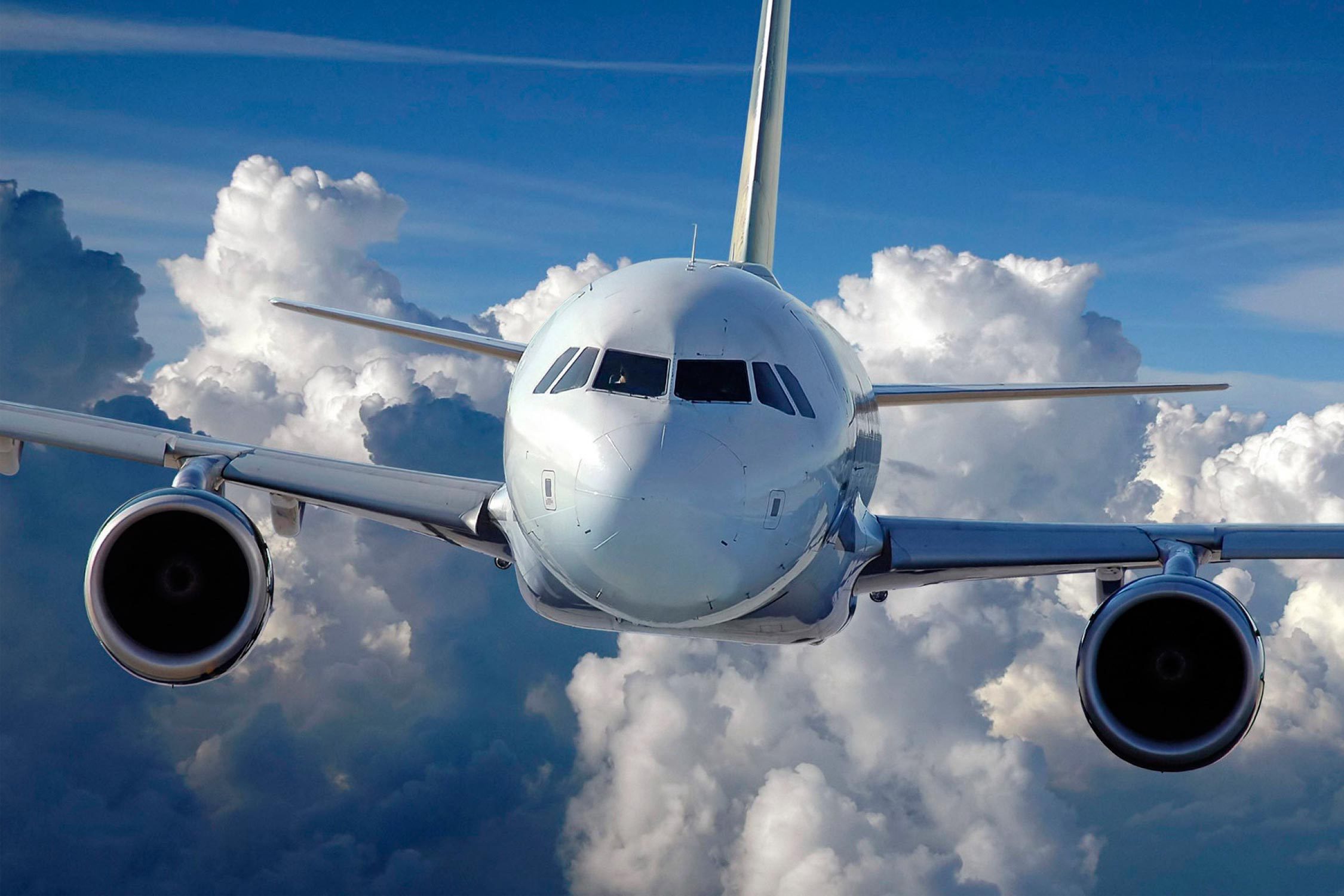When we hear about something like a major air incident, especially one involving both a large passenger plane and a military helicopter, it truly stops us in our tracks. The National Transportation Safety Board, a group that looks into these kinds of events, gave an update on a truly heartbreaking air incident that took place in Washington, D.C., not too long ago. It was, in a way, a very serious situation involving an American Airlines aircraft and a United States Army helicopter. This kind of news, you know, it just brings a wave of profound sadness for everyone involved.
The details that came out painted a rather somber picture of what happened over the nation's capital. There was, apparently, a collision in the air between an American Airlines jet and an Army helicopter. This occurred over Washington, D.C., late on a Wednesday night. It’s the kind of event that makes you pause and consider the sheer scale of what can happen when things go wrong in the skies. So, it's almost like a stark reminder of the delicate balance involved in air travel.
As the news unfolded, it became clear that the outcome was, tragically, very severe. All sixty-seven individuals who were on board both of those aircraft are, sadly, thought to have lost their lives. This is, in fact, a number that truly highlights the immense human cost of such an event. When something like this occurs, it affects so many people, not just those directly involved but also their families, friends, and even the broader community.
Table of Contents
- What Happened During the Washington D.C. Air Incident?
- How Many Lives Were Affected by This Plane and Helicopter Crash?
- What Does a Congressional Hearing Mean for a Plane and Helicopter Crash?
- How Do Airplanes Stay in the Sky?
What Happened During the Washington D.C. Air Incident?
The collision that happened on that Wednesday was, in fact, a very serious occurrence. It involved a passenger jet and a U.S. Army helicopter. Both of these aircraft went down into the Potomac River, right there in Washington. This particular event, you know, turned out to be the most tragic air incident in the country for that year, which really shows the unusual and upsetting nature of what took place. It’s something that, basically, sent shockwaves through the air travel community and beyond.
The time of the impact was just before nine o'clock in the evening, local time. For those in the United Kingdom, that would have been around two in the morning. Both the plane and the helicopter, after their forceful coming together, fell into the water of the Potomac River. It's a rather stark image to consider, two large flying machines ending up in the river, especially given the usual safety protocols in place. This kind of event, well, it certainly makes you think about how quickly things can change in the air.
The Moment of the Plane and Helicopter Crash
What makes this particular incident even more poignant, you know, is that the passenger plane was just moments away from reaching its destination. It was, apparently, so close to landing after its flight. To be so near to safety, and then for something like this to happen, is truly heartbreaking. The mid-air coming together between the American Airlines aircraft and an Army Black Hawk helicopter took the lives of all sixty-seven individuals on board both flying machines. This happened on that Wednesday night, close to Ronald Reagan Airport. It’s a location that sees a lot of air traffic, so for an event of this scale to occur there, it's really quite rare and unsettling.
This kind of event, a plane and helicopter crash, is something that aviation experts spend countless hours trying to prevent. The fact that it happened, so close to a major airport and with such a tragic outcome, means that there are many questions that need answers. People want to understand, you know, what could have possibly led to such a devastating situation. The proximity to a busy air hub just adds another layer of seriousness to the whole thing.
How Many Lives Were Affected by This Plane and Helicopter Crash?
The human toll of this air incident was, as we've mentioned, incredibly high. All sixty-seven people who were flying on both the American Airlines plane and the Army helicopter are presumed to have passed away. This figure represents, in a way, a profound loss of life. Each person had a story, a family, and a future, and all of that was, sadly, cut short. It's a very difficult thing to process when you think about the individual lives behind that number.
When such a large number of lives are lost in a single event, it creates a ripple effect of sorrow that touches many communities. Families are left with an immense void, and the public, too, feels a sense of collective grief. It really is a moment where you realize the fragility of life and how quickly things can change. The sheer scale of the loss in this plane and helicopter crash is something that will be remembered for a long time.
Identifying Victims After the Plane and Helicopter Crash
In the aftermath of such a serious air incident, one of the most important and sensitive tasks is to identify those who were lost. Fire Chief John, a person involved in the recovery efforts, indicated that at least fifty-five individuals had been positively identified following that Wednesday night's mid-air coming together between the American Airlines jet and the military Black Hawk helicopter. This process of identification is, basically, a very painstaking one, but it is absolutely essential for the families seeking closure.
The work of identifying victims after a plane and helicopter crash involves many different experts and a great deal of care. It's a process that brings some measure of certainty to grieving families, allowing them to begin the very difficult journey of saying goodbye. So, while it's a somber task, it's also a crucial step in the aftermath of such a tragic event. The effort put into this by the various teams involved is, in fact, truly commendable.
What Does a Congressional Hearing Mean for a Plane and Helicopter Crash?
Following a major air incident like this, especially one with such a significant loss of life, it's not unusual for there to be a very thorough review. A congressional hearing, for instance, has taken place, which further emphasized the importance of understanding what happened during that January collision. This kind of hearing, you know, brings together various parties to discuss the event, gather information, and, basically, try to figure out what went wrong. It's a serious step taken when a plane and helicopter crash has such widespread impact.
When elected officials hold a hearing about an event, it shows just how serious the situation is considered to be. They want to ensure that all possible lessons are learned and that steps are taken to prevent similar tragedies in the future. It's a way for the public to gain some insight into the investigation and for accountability to be sought. So, a congressional hearing is, in some respects, a very public and important part of the response to such a devastating event.
Looking for Answers After a Plane and Helicopter Crash
These hearings, along with the work of groups like the NTSB, are all about finding answers. They aim to reinforce the understanding of why the collision between the American Airlines passenger jet and the Army helicopter happened, an event that, as we know, resulted in the loss of all sixty-seven individuals on board both aircraft. The goal is to piece together every detail, from the moments leading up to the impact to the conditions in the air. People want to know, you know, what factors contributed to this specific plane and helicopter crash.
It's a long and involved process, this search for answers. Investigators look at everything from air traffic control communications to maintenance records, and even the weather conditions at the time. Every piece of information is, basically, examined very carefully to build a complete picture. This thoroughness is absolutely vital for making air travel safer in the long run.
How Do Airplanes Stay in the Sky?
Thinking about a plane and helicopter crash naturally leads us to wonder about the mechanics of flight itself. How do these huge machines even get off the ground and stay up there? Well, a plane has some essential parts that make it fly. There’s a wing system, for example, which is what helps it stay airborne. Then, you have tail surfaces, which help keep the wings stable. There are also movable parts that let the pilot control how the plane moves while it’s flying. And, of course, there’s a power source, like engines, that pushes it forward. It’s, basically, a rather intricate dance of forces that keeps an aircraft aloft.
The ability to fly, to move through the air, is really quite a marvel of human ingenuity. We have systems like the world’s most popular flight tracker, which lets people follow flights live. There are also live tracking maps, ways to check flight status, and information about airport delays for airline flights, private aircraft, and even at the airports themselves. This kind of technology, you know, helps keep things organized and safe in the skies.
The Basic Science Behind Flight and Preventing a Plane and Helicopter Crash
Flying a plane is, in fact, a very intricate task. It’s not just about pushing buttons; there’s a lot of science involved. This isn't meant to be a pilot’s guide, of course, but it’s helpful to have a basic idea of how forces and motion work when it comes to airplanes. Things like lift, drag, thrust, and gravity all play a part. Engineers and pilots spend years studying these principles to ensure that aircraft can fly safely and predictably. It’s this deep understanding that helps to prevent incidents, including a plane and helicopter crash.
The constant efforts in aviation safety, the rigorous training, and the ongoing improvements in technology are all aimed at making air travel as secure as possible. Every incident, no matter how rare, is studied very closely to learn from it and to make sure that similar events are less likely to happen again. So, in a way, the entire system is always working to improve and protect those who fly.
This article has explored the tragic air incident in Washington, D.C., involving an American Airlines plane and a U.S. Army helicopter, which sadly resulted in the loss of sixty-seven lives. We looked at the details of the collision over the Potomac River, the immense human impact, and the painstaking process of identifying those affected. We also touched upon the role of congressional hearings in seeking answers and understanding the factors behind such a significant plane and helicopter crash. Finally, we considered the fundamental principles that allow aircraft to fly, highlighting the complexity and safety measures inherent in aviation.


